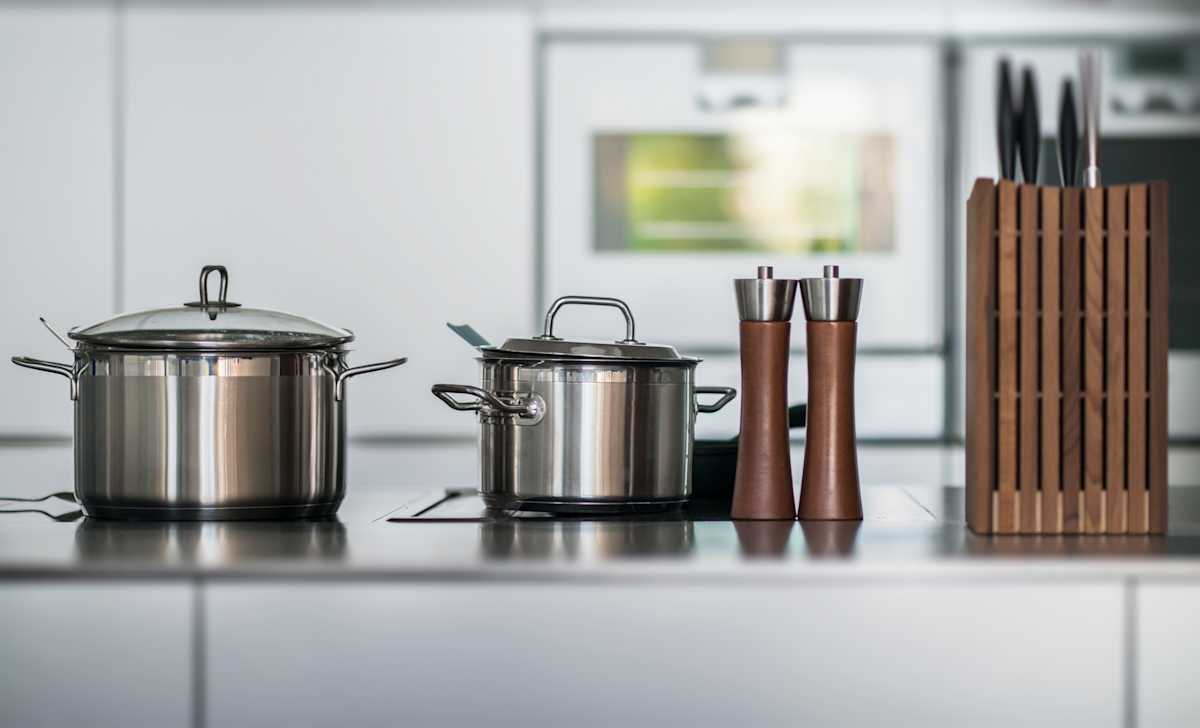How do you clean stainless steel? Tips and tricks!
Stainless steel in the kitchen is practical and easy to keep clean. It stays fresh for a long time and corrodes very slowly thanks to its chromium alloy. However, you’ve probably noticed that greasy fingerprints and other residues tend to appear easily. Fortunately, stainless steel can be cleaned with simple methods.
How to clean stainless steel
You can clean stainless steel easily and without using toxic chemicals. For everyday cleaning, a cloth and a few drops of dish soap or liquid soap go a long way. You will need:
Two microfiber cloths
Dish soap or liquid soap
Instructions:
Mix a few drops of dish soap or liquid soap with warm water.
Dip one microfiber cloth into the soapy solution and wipe the stainless steel surface.
Wipe dry with the second, dry microfiber cloth.
Tip: Some prefer to use a soft sponge instead of a cloth. That’s fine—as long as the sponge is truly soft so it won’t scratch the stainless steel. Never use steel wool on stainless steel surfaces.
Clean stainless steel with vinegar
Vinegar is a staple in many traditional home cleaning tips, and it’s also effective on stainless steel—especially if soap isn't quite enough.
You will need:
White vinegar
Spray bottle
Paper towel
Microfiber cloth
Cooking oil, olive oil, or baby oil
Instructions:
Fill a spray bottle with one part vinegar and three parts water. Spray it on the stainless steel surface. Wipe off the vinegar using a paper towel, going in the direction of the steel’s grain to remove built-up grime.
Moisten the microfiber cloth with a few drops of oil. Rub the oil into the surface, again following the grain. This removes any remaining marks from the vinegar and gives the steel a shiny finish while protecting it from future dirt.
Finally, polish the surface gently using the dry side of the cloth or a separate dry cloth. The stainless steel will shine like new!
Cleaning stainless appliances
Stainless steel appliances such as refrigerators, freezers, and ovens are stylish and give the kitchen a professional look. But when greasy smudges and fingerprints appear, it quickly feels less clean.
New stainless appliances often come with a protective coating from the manufacturer, making them easier to clean. In those cases, a damp microfiber cloth is usually enough to wipe off any grease. After a few years, the coating wears off, and that’s when you may need to use one of the methods described above.
Cleaning stainless steel cutlery and other items
Dirt and grime can also build up on small stainless steel items like cutlery. You can pre-treat the items by filling a pot or large bowl with warm water and a few drops of dish soap. Let the items soak for about 15 minutes. Then, wash them by hand as usual or run them through the dishwasher.
Stainless steel cleaning products
There are also specific cleaning products made for stainless steel. While you can get by without them, they can be convenient and often smell pleasant.
Examples include:
Cleaning wipes for stainless steel – These resemble regular wet wipes but are infused with cleaning chemicals specially formulated for stainless surfaces.
Spray cleaners for stainless steel – These remove grease stains and restore shine. They often work on other surfaces like aluminum, chrome, and plastic too.
Removing limescale from stainless steel
White deposits on stainless steel are likely to be limescale, which forms in areas with frequent water exposure, like near sinks. You can remove limescale with vinegar and water:
Mix one part vinegar with three parts water and spray it on the surface.
Let it sit for a while, then wipe it off with a damp microfiber cloth.
